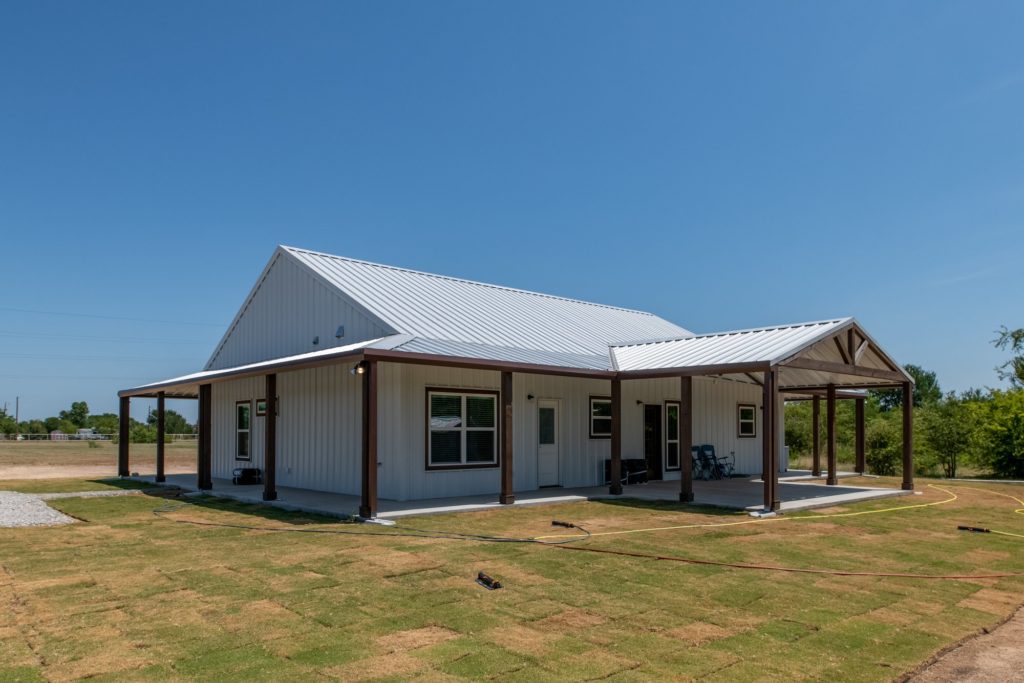Comprehensive Barndominium Repair: Fixing Structural and Visual Concerns
Comprehensive Barndominium Repair: Fixing Structural and Visual Concerns
Blog Article
Barndominiums Vs. Conventional Houses: an In-depth Contrast of Way Of Life and Performance
The decision between barndominiums and typical homes includes different factors, consisting of way of living preferences and practical demands. Barndominiums are characterized by their open formats and versatility, often appealing to those that focus on public living and flexibility.
Review of Barndominiums
Barndominiums, a novel housing fad getting popularity throughout numerous regions, mix the rustic beauty of barn-style design with the capability of modern-day home. These distinct structures normally consist of a metal or timber framework, combining open floor plans and high ceilings with energy-efficient attributes. Typically located on extensive rural homes, barndominiums supply home owners the opportunity to delight in a peaceful way of living while providing sufficient area for different activities.
The adaptability of barndominiums extends beyond their aesthetic allure; they can act as both living quarters and useful spaces for hobbies, workshops, or perhaps local business. Their flexible design enables simple modification, accommodating varied household requirements and choices. Numerous owners appreciate the reduced upkeep demands connected with metal home siding and roof, adding to lasting toughness.

Features of Conventional Residences
Emphasizing timeless style and convenience, conventional homes are identified by their distinct architectural designs, which frequently mirror historical influences and local looks. Common attributes consist of in proportion facades, gabled roof coverings, and a focus on workmanship, resulting in a warm and welcoming ambience.
Traditional homes commonly include elements such as crown molding, wainscoting, and hardwood flooring, enhancing their traditional charm. They commonly include multiple rooms with defined functions, promoting household interaction while permitting personal privacy. view now. The design commonly consists of formal living and dining areas, which contribute to enjoyable guests and holding family members gatherings
Exterior products such as block, wood, or rock are regularly utilized, contributing to longevity and a sense of durability. Barndominium builder. Furthermore, several standard homes are made with front porches or stoops, promoting a feeling of community and link with the neighborhood
Landscape design plays a significant function in traditional home layout, with well-maintained yards and pathways that enhance aesthetic charm - see website. In general, typical homes symbolize a feeling of fond memories and security, appealing to those who value heritage and a more organized living atmosphere
Expense Comparison
Generally, a cost contrast between barndominiums and traditional homes reveals significant distinctions in building expenditures and general financial investment. Barndominiums, frequently created from steel or steel frameworks, normally sustain lower product and labor costs than standard homes constructed from wood and brick. The simplified style of barndominiums can equate to lowered construction times, additionally lowering labor expenses and quickening occupancy.
On average, the price per square foot for a barndominium ranges from $100 to $150, while conventional homes can vary widely, generally dropping in between $150 and $300 per square foot, relying on area, materials, and style intricacy. This cost disparity makes barndominiums an eye-catching option for budget-conscious buyers seeking larger space without sacrificing top quality.
In addition, barndominiums might lead to long-term cost savings via lower maintenance prices, power effectiveness, and insurance coverage prices. Their sturdy construction materials commonly call for less upkeep gradually contrasted to typical homes. It is crucial to think about that while initial prices may be reduced for barndominiums, the final financial investment will also depend on private personalization and desired services, which can affect the overall cost in both real estate kinds.
Lifestyle and Area Factors To Consider
When thinking about lifestyle and room, barndominiums provide an unique adaptability that attract a variety of homeowners. These hybrid frameworks integrate household coping with functional area, frequently featuring open floor strategies that can be adapted to fit specific needs. This adaptability is especially helpful for family members or individuals seeking a tailored living setting, enabling varied uses such as home offices, workshops, or entertainment areas.

Furthermore, the visual allure of barndominiums can deal with both rustic and modern tastes, making them a flexible option for various design choices (Barndominium repair). Inevitably, the selection between a barndominium and a conventional home commonly rests on exactly how well each choice aligns with the homeowner's way of living ambitions and spatial demands, highlighting the significance of considering individual concerns in the decision-making process
Environmental Influence and Sustainability
The ecological impact and sustainability of barndominiums existing engaging advantages compared to traditional homes. Largely created from steel and other sturdy products, barndominiums are typically built utilizing recycled resources, lowering the need for new products and reducing waste. Their design commonly highlights open spaces, which can cause lower power intake for heating & cooling compared to typical homes with even more segmented formats.
Furthermore, barndominiums can incorporate lasting functions such as photovoltaic panels, rainwater harvesting systems, and advanced insulation strategies, improving their power performance. The versatility of their layout allows house owners to incorporate these innovations extra perfectly than in lots of traditional homes, which might require substantial retrofitting.
Additionally, barndominiums commonly require fewer sources for construction due to their easier, extra effective styles. This not just reduces the carbon footprint linked with building yet likewise adds to a more sustainable way of living. In comparison, typical homes may entail greater levels of power expenditure and source utilize throughout their lifecycle, from construction to maintenance. Generally, barndominiums represent a forward-thinking technique to lasting living, straightening with modern environmental priorities.
Verdict
In summary, the choice between barndominiums and traditional homes depends upon specific way of living choices and practical needs. Barndominiums, with their open formats and sustainable read here materials, satisfy those seeking versatility and communal living. On the other hand, typical homes offer defined spaces that enhance privacy and maintain historic aesthetics. Each option presents special benefits, necessitating cautious consideration of one's values and requires when determining one of the most appropriate living setting.
Report this page